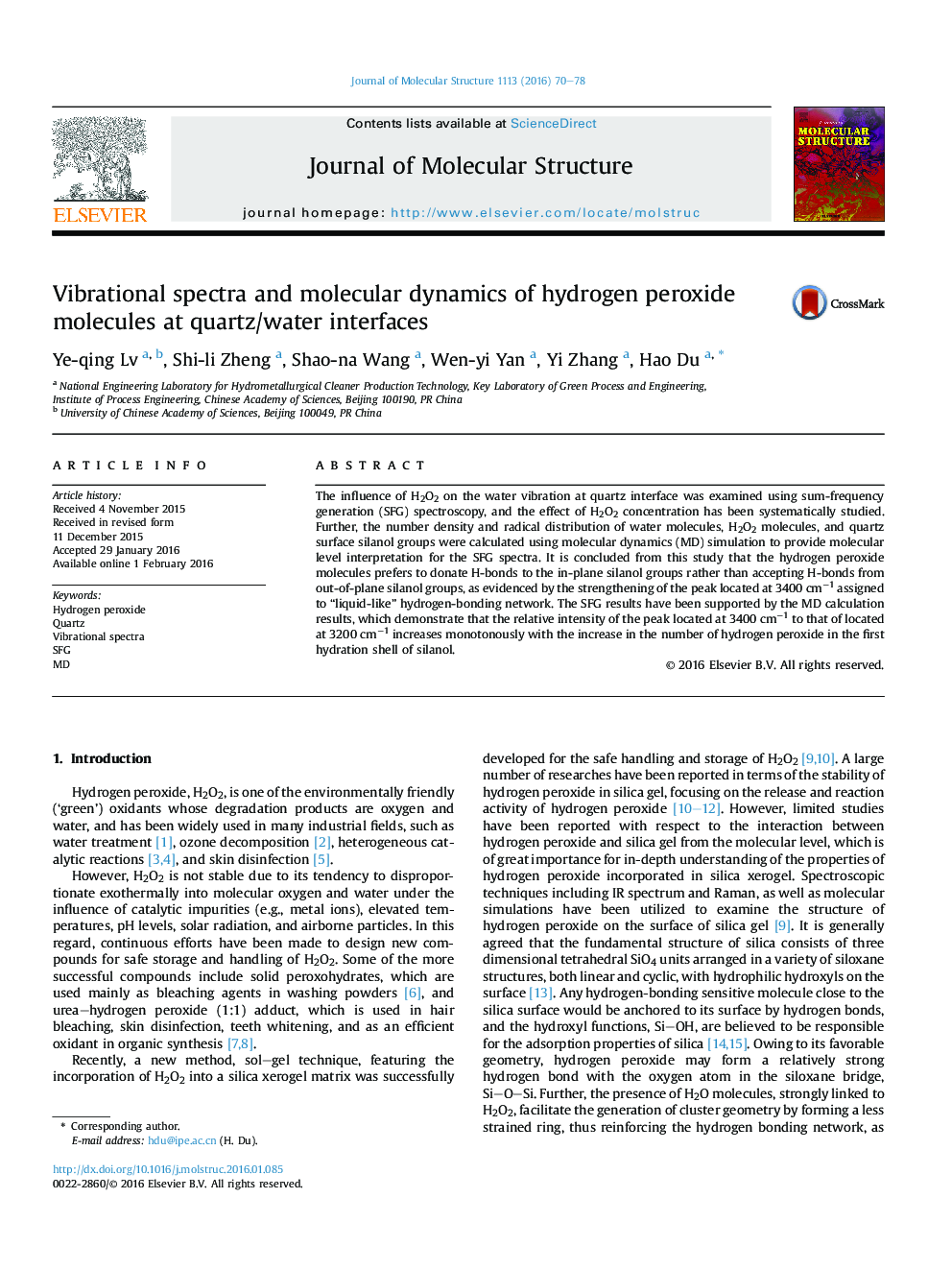| Article ID | Journal | Published Year | Pages | File Type |
|---|---|---|---|---|
| 1401273 | Journal of Molecular Structure | 2016 | 9 Pages |
•Effect of H2O2 on the H2O/quartz was studied using SFG spectra and MD simulation.•Presence of H2O2 at quartz surface contributes to “liquid-like” H-bond structure.•Interfacial H2O2 parallels to surface due to interactions with in-plane silanols.
The influence of H2O2 on the water vibration at quartz interface was examined using sum-frequency generation (SFG) spectroscopy, and the effect of H2O2 concentration has been systematically studied. Further, the number density and radical distribution of water molecules, H2O2 molecules, and quartz surface silanol groups were calculated using molecular dynamics (MD) simulation to provide molecular level interpretation for the SFG spectra. It is concluded from this study that the hydrogen peroxide molecules prefers to donate H-bonds to the in-plane silanol groups rather than accepting H-bonds from out-of-plane silanol groups, as evidenced by the strengthening of the peak located at 3400 cm−1 assigned to “liquid-like” hydrogen-bonding network. The SFG results have been supported by the MD calculation results, which demonstrate that the relative intensity of the peak located at 3400 cm−1 to that of located at 3200 cm−1 increases monotonously with the increase in the number of hydrogen peroxide in the first hydration shell of silanol.
Graphical abstractFigure optionsDownload full-size imageDownload as PowerPoint slide
